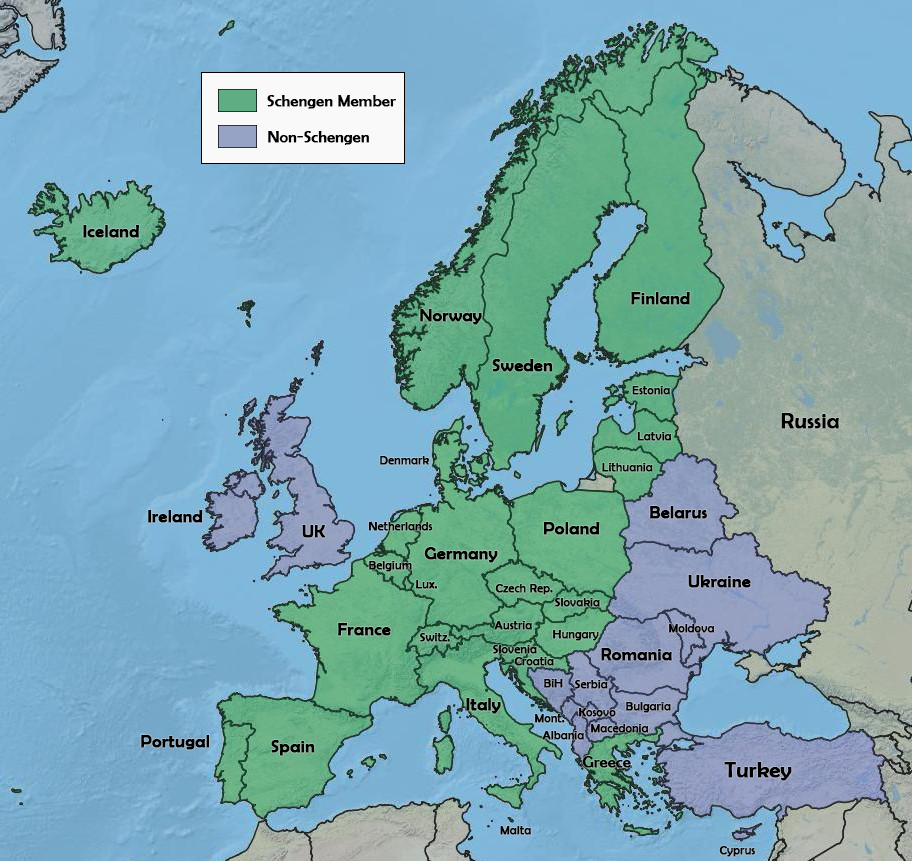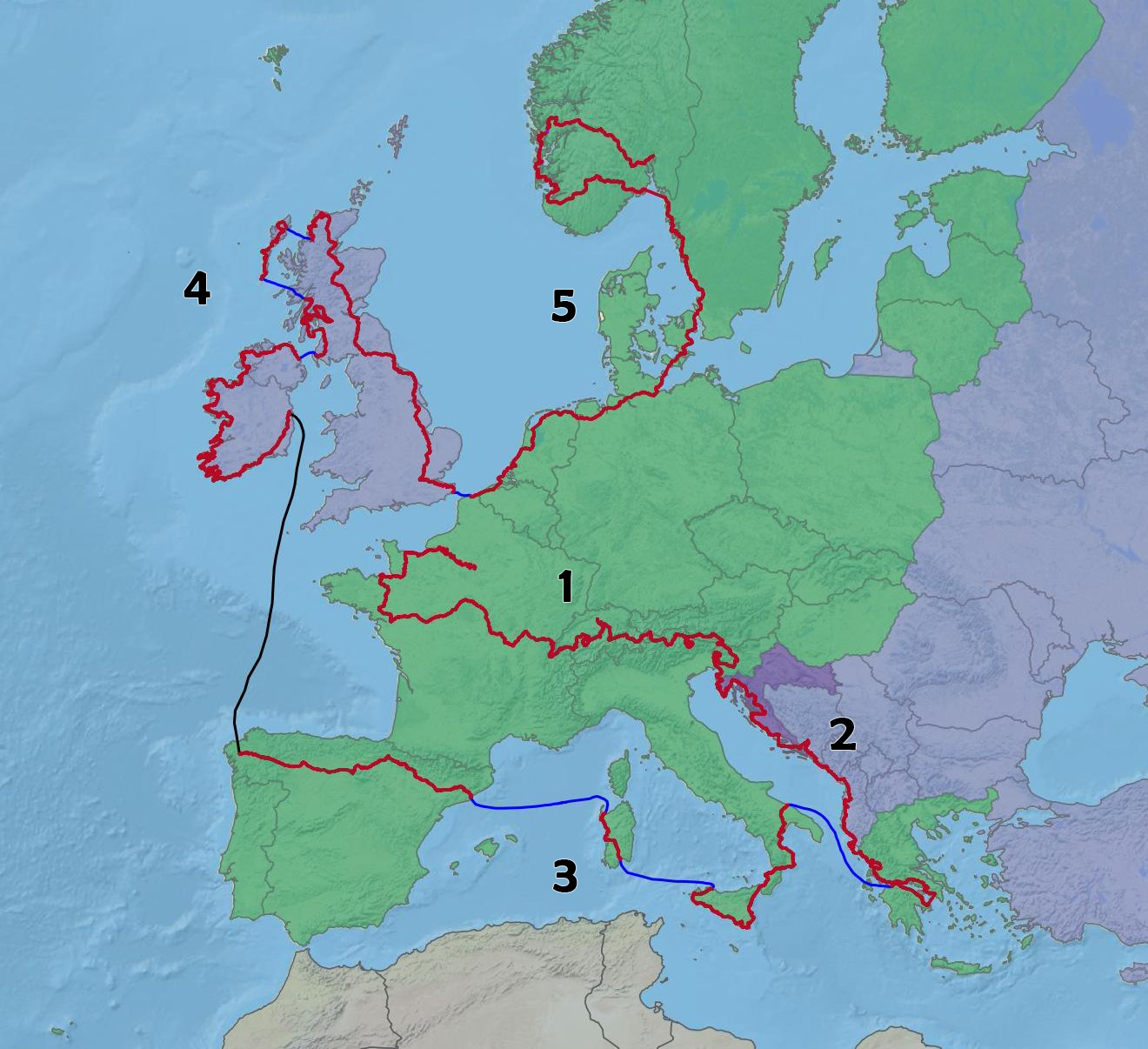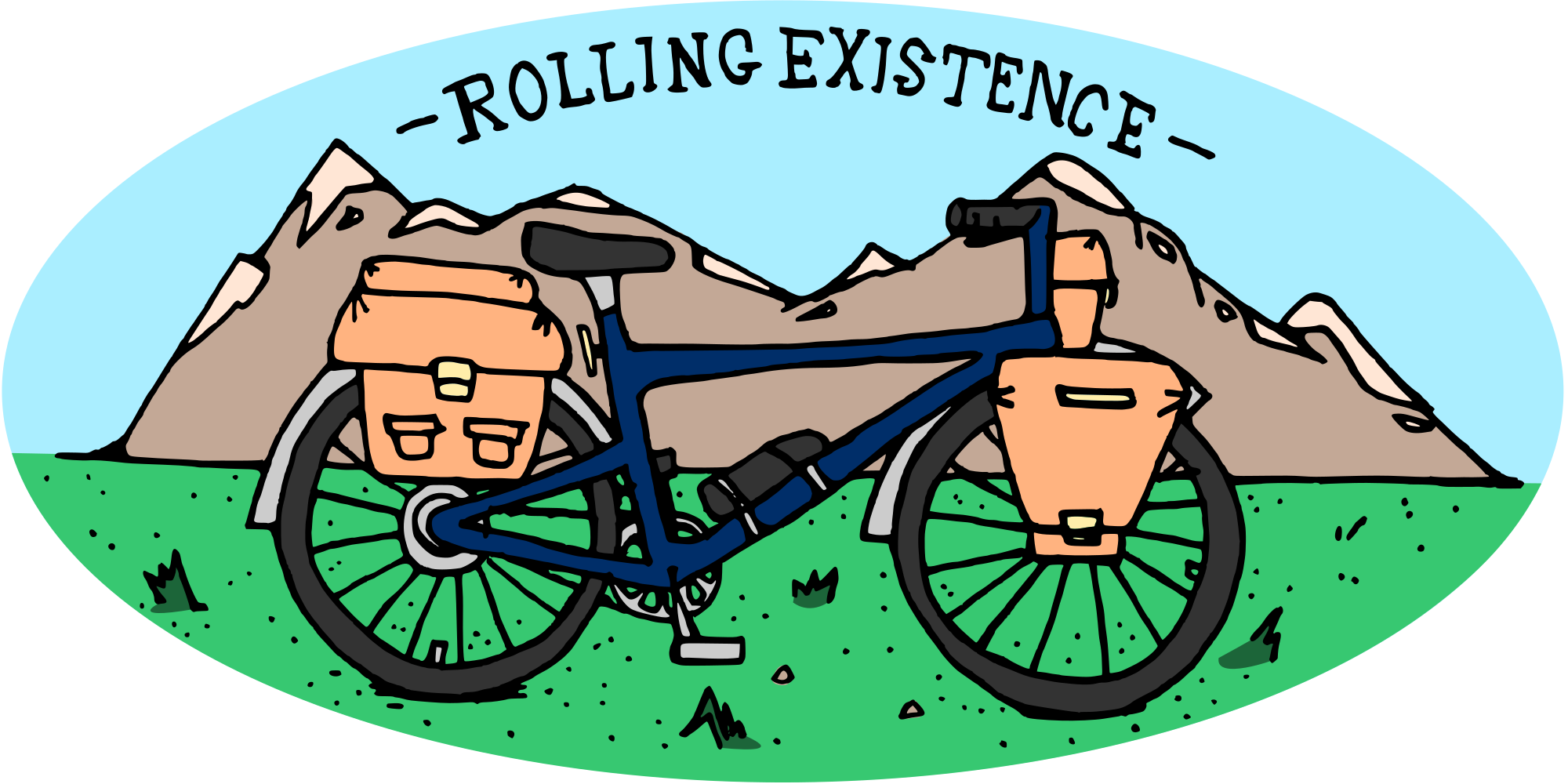How We Traveled in Europe for 15 Months (As Americans)
The Schengen Zone (SZ) of Europe is the world’s largest visa free zone – where 27 countries (as of 2023) have done away with their internal borders to facilitate easier travel between SZ countries. Citizens from many countries, including the United States, are allowed to travel within the Schengen Zone visa-free for up to 90 days within a 180 day period.
Essentially, this means that if you stay in the SZ for three months, you have to leave the SZ for three months to “reset” your Schengen visa. In this article, we’ll go over our strategy and route for traveling around Europe for 15 months.
The Schengen Zone as of 2023

List of Schengen Zone member countries: Austria, Belgium, Czech Republic, Croatia, Denmark, Estonia, Finland, France, Germany, Greece, Hungary, Iceland, Italy, Latvia, Liechtenstein, Lithuania, Luxembourg, Malta, Netherlands, Norway, Poland, Portugal, Slovakia, Slovenia, Spain, Sweden, and Switzerland.
Monaco, San Marino, and Vatican City are technically not part of the Schengen Zone, but they are considered de-facto members due to their agreements with neighboring countries.
Croatia officially joined the Schengen Zone as of January 1, 2023, which limits the options for resetting your Schengen visa, especially if you’re resetting it in the winter. We spent close to two months in Croatia alone to reset our visa, because the coast was relatively warm and the cost of accommodation was affordable for taking some time off the bikes.
Our Schengen Zone Travel Plan

1. Schengen Round 1: France, Switzerland, Northern Italy, Austria, Slovenia – 3 months (July – September)
We started our trip in France and spent over a month riding along the Seine, through Normandy and Brittany, the Loire Valley, and the Jura Mountains. Next we traveled through the Alps during August and took a winding route around Western Slovenia in September.
2. Outside the Schengen: Croatia, Bosnia and Herzegovina, Montenegro, Albania – roughly 3.5 months (September – December)
At the time we were traveling, Croatia granted a 3 month visa to Americans. We took our time traveling along the Istrian Peninsula and Dalmatian Coast, with a short detour into Bosnia and Herzegovina. Then, we took a month off in Dubrovnik during a particularly rainy period of time (mid-November to mid-December) before continuing along the coast of Montenegro and Albania.
3. Schengen Round 2: Greece, Southern Italy, Spain – 3 months (January – March)
We arrived in Greece in early January, and here we had our most challenging weather of the winter. It rained quite often and temperatures were around 40-50 degrees F during the day, and the wind never seemed to stop. The weather improved significantly when we arrived by ferry in Southern Italy, Sicily, and Sardinia. Our final Schengen country in this segment was Spain, where we cycled part of the Camino Frances.
4. Outside the Schengen: Ireland and the UK – 3 months (April – June)
We flew from Santiago, Spain to Dublin and spent over a month in Ireland. Next, we took a meandering route around Scotland before riding the length of England to Dover. We had awful weather in Scotland, and a part of us felt like we spent a bit too much time in the British Isles, but due to the Schengen limitations we didn’t have much of a choice.
5. Schengen Round 3: France, Belgium, Netherlands, Germany, Denmark, Sweden, Norway – 2.5 months (July – mid-September)
Our final foray into the Schengen Zone focused on Northern Europe. We tried to spend as much time as possible in Norway, since it had the best scenery and a relaxed attitude regarding wild camping.
Alternative Options For Travel Outside the SZ
There are, of course, other options for resetting your Schengen Zone visa, and with Croatia newly admitted to the SZ, travelers will need to seek out alternatives. One could venture further into Eastern Europe or Turkey, though these destinations would be challenging during the height of winter if traveling by bicycle.
Long-Stay Visas
If you would like to stay within the Schengen Zone for longer than 3 months without having to reset your visa, long-stay visas are an option worth considering. Some European countries offer long-stay visas for tourism purposes, and if granted, you could travel within that country before the Schengen clock starts ticking. For example, France offers long-stay (Type D) visas for up to one year. So, if you had this visa, you could leisurely travel around France before your 3 month Schengen visa begins.
These visas do require quite a bit of paperwork and forethought, and we can’t speak personally to how difficult they are to get. Since we were planning our trip on the fly, we decided that we didn’t want to get bogged down with the visa application process in addition to finalizing our cycling route. That being said, there are definitely a lot of benefits to having more time and flexibility within the Schengen Zone, so it all depends on your goals and what you want to see.
Further Resources
More info on which countries are allowed visa-free travel in the Schengen Zone, updates, visa types, etc: Schengen Visa Info

Where are your passports ever asked for or inspected while traveling within the Schengen area?
You only need to show your passport when you enter or leave the Schengen Zone. When traveling within the SZ, there are no border checkpoints – just a sign telling you that you’ve entered another country.
I think I would just risk it and travel. If the police are targeting people pedaling we all have another problem to overcome. Of course, when you see thieves with couches loaded on their bikes we could become more suspicious and be stopped. Then what, they lock you and your bike up? I hope that South America will arrive at a similar plan to open their borders, it just makes sense. And the new visa for Europe just makes me mad. It is just another tax.